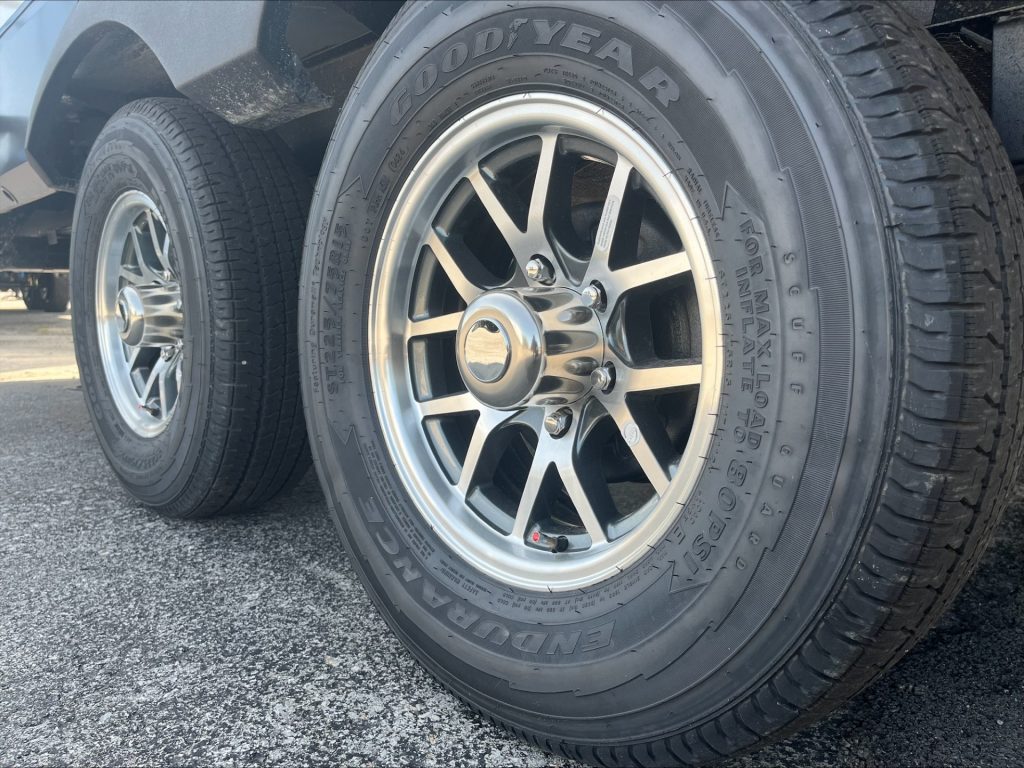
Regular RV maintenance is absolutely key to ensuring your vehicle remains in top condition for every adventure. One essential yet easily overlooked task is checking the tire pressure. Properly inflated tires not only ensure smoother rides but also promote safety and fuel efficiency.
In this how to, I’ll walk you through how to check your RV’s tire pressure, why it’s crucial, and the tools you’ll need for the job.
Why Checking RV Tire Pressure is Important
Before really getting into these steps, let’s talk about why maintaining proper tire pressure is so important for RVs:
- Safety: Underinflated or overinflated tires can lead to blowouts, which is dangerous on the road or in traffic.
- Tire Longevity: Proper inflation helps your tires wear evenly, extending their lifespan.
- Fuel Efficiency: Overly low tire pressure increases road friction, which lowers fuel efficiency.
- Comfort: Correctly inflated tires ensure a smoother and more stable ride, reducing wear on your RV’s suspension.
When to Check RV Tire Pressure
It’s best to check your tire pressure under the following circumstances:
- Before every trip: Make sure your tires are at the right pressure before you hit the road.
- Before long-distance drives: Always check before setting off on a long trip, especially after a long period of inactivity.
- When weather changes: Cold weather can reduce tire pressure, while hot weather can increase it, so adjust as necessary.
The Tools
- Tire pressure gauge: A high-quality digital or analog tire pressure gauge.
- Air compressor or inflator: To adjust the air pressure if needed.
- Tire pressure monitoring system (TPMS): Optional but recommended for real-time pressure monitoring.
- Your RV’s owner manual: This will tell you the recommended PSI (pounds per square inch) for your tires.
How to Check Your RV Tire Pressure: Step-by-Step
1. Ensure Your Tires Are Cold
Tires expand when they’re “warm”, which can give inaccurate readings. It’s best to check tire pressure when your tires are “cold” — ideally after the RV has been stationary for at least three hours or driven less than a mile.
2. Locate the Recommended PSI
Find the recommended tire pressure for your RV in your owner’s manual or on the tire information placard (usually found inside the driver’s side door). This will tell you the correct PSI for both the front and rear tires.
3. Use a Reliable Tire Pressure Gauge
Remove the valve cap from the tire and press the tire pressure gauge onto the valve stem. Hold it firmly in place to get an accurate reading. Digital gauges are often more precise, but analog ones work well too.
4. Compare the Reading with Recommended PSI
If the reading is lower than the recommended PSI, the tires are underinflated. If the reading is higher, they are overinflated. Keep in mind that even a few PSI differences can affect handling and tire longevity.
5. Inflate or Deflate as Necessary
If the tire pressure is too low, use an air compressor to add air until the pressure matches the recommended level. If the pressure is too high, release some air by pressing down on the valve stem until the gauge shows the correct PSI.
6. Check All Tires, Including the Spare
Don’t forget to check all tires, including your spare, to ensure they are all at the correct pressure. Uneven pressure can lead to uneven wear or, worse, a dangerous blowout.
7. Use a TPMS for Continuous Monitoring (Optional)
Investing in a Tire Pressure Monitoring System (TPMS) can save you time and provide peace of mind. A TPMS continuously monitors your tire pressure and alerts you if it drops below safe levels during your travels.
Extra Tips And Tricks
- Check pressure regularly: Even if you’re not planning a trip, it’s a good idea to check tire pressure once a month to catch any slow leaks.
- Monitor tire wear: Uneven tire wear can be a sign of improper inflation or misalignment.
- Rotate tires: Periodically rotating your RV’s tires helps them wear evenly and last longer.
- Replace tires as needed: RV tires should generally be replaced every 5 to 7 years, even if they don’t appear heavily worn. Check for any signs of cracking or dry rot.
Conclusion
Proper tire pressure is crucial, essential even for your RV’s safety, performance, and fuel efficiency. By following these simple steps to check and adjust your tire pressure, you can hit the road with confidence and enjoy a smooth, safe journey. Thanks for reading and until next time, happy camping!


